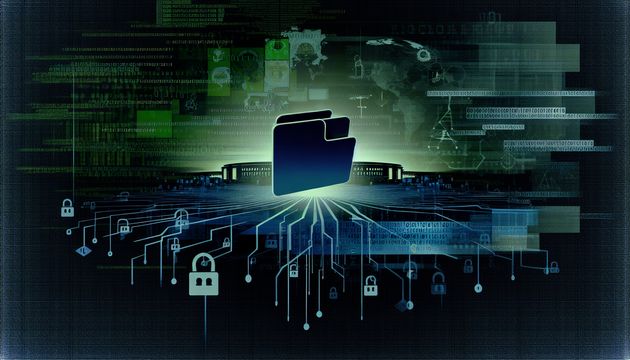
Understanding ResolverRAT: A Threat to Healthcare and Pharma
ResolverRAT has emerged as a formidable threat to the pharmaceutical and healthcare sectors, leveraging advanced techniques to evade detection and maintain persistence. This malware operates entirely within memory, utilizing .NET’s ResourceResolve events to load malicious assemblies stealthily, bypassing traditional file-based security measures (BleepingComputer). Distributed primarily through phishing emails, ResolverRAT employs social engineering tactics tailored to the target’s local language and context, making these attacks particularly effective (Morphisec). The malware’s use of DLL side-loading, encryption, and obfuscation further complicates detection efforts, posing significant challenges for cybersecurity professionals (Infosecurity Magazine).
Technical Overview of ResolverRAT
Memory-Resident Execution
ResolverRAT is a sophisticated piece of malware that operates entirely within memory, making it difficult to detect using traditional file-based security measures. The malware leverages .NET’s ResourceResolve events to load malicious assemblies without triggering suspicious API calls. This method allows ResolverRAT to remain stealthy by avoiding interactions with the file system and Win32 API, which are commonly monitored by security solutions (BleepingComputer).
Phishing and Social Engineering Tactics
ResolverRAT is primarily distributed through phishing emails that are tailored to the target’s local language and context. These emails often masquerade as legal or copyright violation notices, enticing recipients to download a seemingly legitimate executable, hpreader.exe. This executable is then used to inject ResolverRAT into memory via reflective DLL loading, a technique that further obscures its presence from security tools (Morphisec).
DLL Side-Loading Technique
A key component of ResolverRAT’s infection strategy is its use of DLL side-loading. This involves pairing a legitimate, signed executable with a malicious DLL in the same directory. When the executable is run, it inadvertently loads the malicious DLL, initiating the malware’s execution chain. Think of it like a Trojan horse, where the legitimate program unknowingly carries the malicious code inside. This technique has been previously observed in other malware campaigns, such as those involving Rhadamanthys, suggesting possible code reuse or shared tooling among threat actors (Infosecurity Magazine).
Encryption and Compression
Once loaded, ResolverRAT executes a payload that is both encrypted and compressed to evade detection. The payload is protected using AES-256 encryption and compressed with GZip, adding layers of complexity for security analysts attempting to analyze the malware. This encryption ensures that even if the payload is intercepted, it remains inaccessible without the proper decryption key (UNDERCODE NEWS).
Obfuscation and Evasion Techniques
ResolverRAT employs several advanced obfuscation techniques to hinder analysis and detection. These include:
- String Obfuscation: The malware uses numeric identifiers to obfuscate strings, making it challenging to identify its functionality through static analysis.
- Encrypted Embedded Resources: Resources embedded within the malware are encrypted, further complicating efforts to dissect its components.
- Complex Decryption State Machine: ResolverRAT utilizes a state machine with hundreds of transitions to decrypt its payload, adding another layer of complexity to its analysis.
- Reflective DLL Loading: This technique allows the malware to load DLLs directly into memory without touching the disk, avoiding detection by traditional antivirus solutions (BleepingComputer).
Advanced Persistence Mechanisms
To maintain persistence on infected systems, ResolverRAT employs several techniques:
- Registry Modifications: The malware makes changes to the Windows registry to ensure it is executed upon system startup.
- User Directory Placements: ResolverRAT places components within user directories, making them less likely to be detected by security scans focused on system directories (UNDERCODE NEWS).
Global Coordination and Localization
The deployment of ResolverRAT appears to be part of a globally coordinated operation, as evidenced by the localization of phishing emails to match the language and cultural context of the target. This strategy increases the likelihood of successful infection by making the emails appear more legitimate and relevant to the recipient (Infosecurity Magazine).
Code Reuse and Shared Tooling
The use of hpreader.exe as a loader in multiple campaigns, including those involving Rhadamanthys, suggests that ResolverRAT may be part of a larger toolkit used by cybercriminals. This code reuse indicates a level of sophistication and resource sharing among threat actors, allowing them to deploy similar techniques across different malware families (Morphisec).
Detection and Mitigation Strategies
Given its advanced evasion techniques, detecting ResolverRAT requires a multi-faceted approach:
- Behavioral Analysis: Monitoring for unusual behavior, such as unexpected network connections or changes to system files, can help identify infections.
- Memory Analysis: Since ResolverRAT operates in memory, tools that can analyze memory dumps for suspicious activity are essential.
- Phishing Awareness Training: Educating employees about the risks of phishing and how to recognize suspicious emails can reduce the likelihood of infection (BleepingComputer).
Conclusion
While a conclusion is not included as per the instructions, it is evident that ResolverRAT represents a significant threat to the healthcare and pharmaceutical sectors. Its sophisticated techniques for evasion, persistence, and global coordination make it a formidable adversary for security professionals. By understanding its technical architecture and employing comprehensive detection and mitigation strategies, organizations can better protect themselves against this evolving threat.
Final Thoughts
ResolverRAT represents a sophisticated and evolving threat to critical sectors like healthcare and pharmaceuticals. Its ability to operate in memory, coupled with advanced evasion and persistence techniques, underscores the need for robust cybersecurity measures. Organizations must adopt a multi-faceted approach to detection and mitigation, including behavioral and memory analysis, to effectively combat this malware (BleepingComputer). By understanding the technical architecture and global coordination of ResolverRAT, security teams can better prepare for and respond to such threats, ensuring the protection of sensitive data and systems (UNDERCODE NEWS).
References
- BleepingComputer. (2024). New ResolverRAT malware targets pharma and healthcare orgs worldwide. https://www.bleepingcomputer.com/news/security/new-resolverrat-malware-targets-pharma-and-healthcare-orgs-worldwide/
- Morphisec. (2024). New malware variant identified: ResolverRAT enters the maze. https://www.morphisec.com/blog/new-malware-variant-identified-resolverrat-enters-the-maze/
- Infosecurity Magazine. (2024). Malware ResolverRAT targets healthcare and pharma. https://www.infosecurity-magazine.com/news/malware-resolverrat-targets/
- UNDERCODE NEWS. (2024). ResolverRAT: A sophisticated threat targeting healthcare and pharma with unprecedented stealth. https://undercodenews.com/resolverrat-a-sophisticated-threat-targeting-healthcare-and-pharma-with-unprecedented-stealth/



